Welcome to Kagbeni, an extraordinary village nestled in the mystical realm of the Nepalese Himalayas. Kagbeni is a quaint village that seems untouched by time. With its ancient architecture, dramatic landscapes, and rich cultural heritage Kagbeni has become a hidden gem for adventurous travelers seeking an off-the-beaten-path experience.
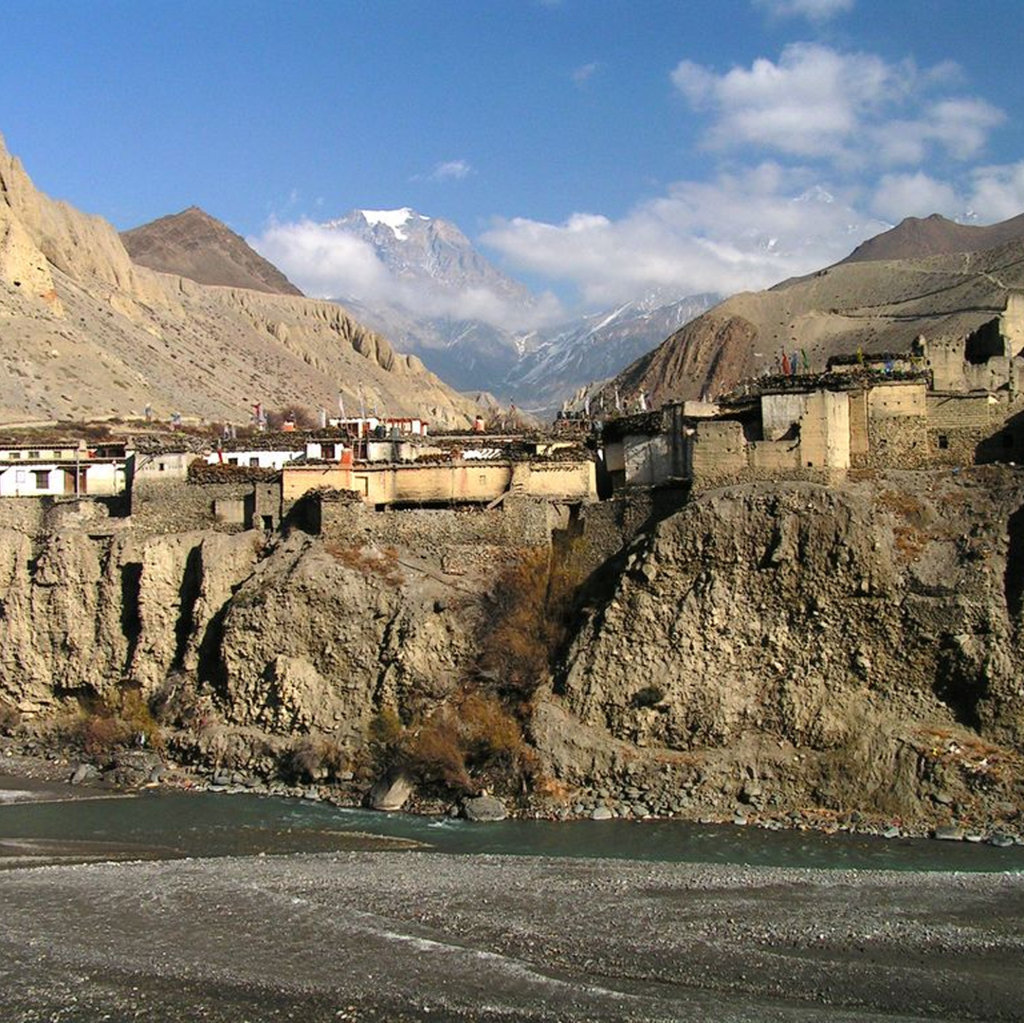
In this blog, we invite you to embark on a journey to Kagbeni, a place that defies expectations and offers a truly extraordinary experience.
History of Kagbeni
Kagbeni is a historic village in the Mustang district of Nepal, situated along the Salt Trade Route between Nepal and Tibet. It served as a crucial stopover point for traders and pilgrims. The village has a rich history dating back several centuries, and its architecture reflects the cultural influence of Nepal and Tibet.
Also Read: Upper Mustang Festival: An Spiritual Heaven
Kagbeni holds religious significance and is located near the confluence of sacred rivers. Today, Kagbeni is a popular trekking destination, known for its well-preserved architecture and cultural heritage.
A Gateway to the Hidden Kingdom
Kagbeni serves as the gateway to the fabled Kingdom of Mustang, an ancient and once-forbidden land that was closed to foreigners until 1992. This historical significance lends an air of mystique to the village, making it a dream destination for adventure enthusiasts and intrepid travelers.
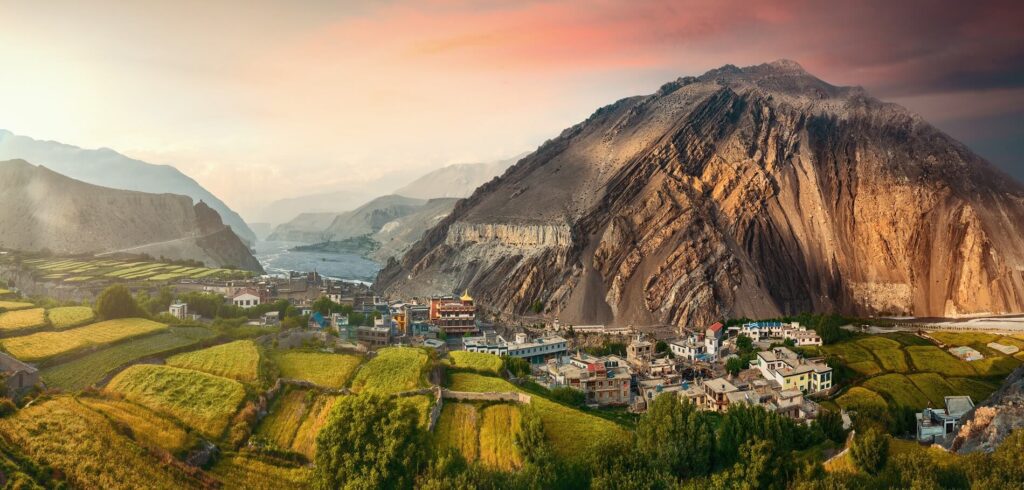
As you traverse the rugged trails leading to Kagbeni, prepare to be mesmerized by the breathtaking views of snow–capped peaks, barren landscapes, and the Kali Gandaki River snaking through the valley.
Where is Kagbeni
Kagbeni is located in the Mustang district of Nepal which lies in the north-central part of the country. The village is situated in the Kali Gandaki River Valley, a region renowned for its dramatic landscapes and ancient trading routes. Kagbeni is situated between the soaring peaks of the Annapurna and Dhaulagiri mountain ranges, offering visitors a breathtaking panorama of snow-capped peaks and rugged terrain.
Altitude of Kagbeni
Kagbeni is situated at an altitude of approximately 2,804 m/ 9199 ft above sea level. Its location at this elevation grants visitors a unique opportunity to experience the splendor of the Himalayas while immersing themselves in the authentic local culture.

The altitude of Kagbeni contributes to its cool and pleasant climate throughout the year. However, it is important to note that the temperatures can vary significantly, especially during the winter months when the mercury drops considerably.
Average Temperature and Weather Condition of Kagbeni
Let’s take a look at the average temperature and weather conditions of Kagbeni throughout the year.
1. Spring (March to May)
As winter loosens its icy grip, Kagbeni awakens to the soothing embrace of spring. The season begins with a slight chill in the air, gradually giving way to milder temperatures. During March and early April, the average daytime temperatures range from 10°C to 16°C (50°F to 61°F), while the nights can be cooler, dipping to around 2°C to 6°C (36°F to 43°F).
You may be interested: Best time to visit upper mustang
As the season progresses, the mercury climbs, with temperatures soaring to a pleasant 15°C to 20°C (59°F to 68°F) during May. Spring in Kagbeni is accompanied by blooming wildflowers, making it an ideal time for nature enthusiasts and trekkers to explore the area.
2. Summer (June to August)
With summer comes a transformation in the landscape of Kagbeni. The temperature rises, and the village becomes a respite from the scorching heat found in the lower regions of Nepal. During June, the average temperature ranges from 17°C to 23°C (63°F to 73°F), while July and August experience slightly warmer conditions with average temperatures reaching 20°C to 25°C (68°F to 77°F).
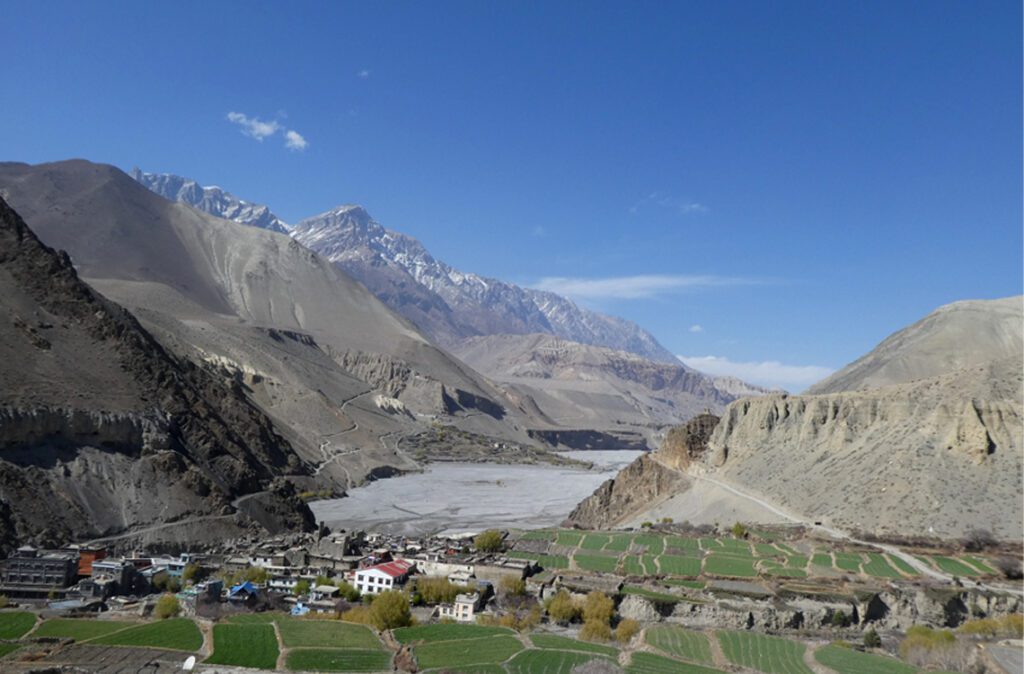
Despite the warmer temperatures, the climate remains pleasant and comfortable, making summer a popular time for outdoor activities such as hiking and exploring the nearby valleys and monasteries.
3. Monsoon (September to November)
As summer transitions to autumn, the monsoon season envelops Kagbeni in a cloak of rain and mist. Monsoons in this region bring intermittent rainfall, usually in the afternoon and evening, and contribute to the lush greenery that carpets the surrounding landscapes. September marks the beginning of the monsoon season, with temperatures ranging from 16°C to 22°C (61°F to 72°F).
October and November witness a gradual decrease in rainfall, with temperatures ranging from 13°C to 19°C (55°F to 66°F). The monsoon season may pose challenges for outdoor activities due to the occasional heavy downpours and muddy trails, but the mystical atmosphere created by the clouds and mist can be an enchanting sight.
4. Winter (December to February)
Winter paints Kagbeni with a palette of ethereal beauty and tranquility. December and January are the coldest months, with average temperatures ranging from -4°C to 5°C (24°F to 41°F).
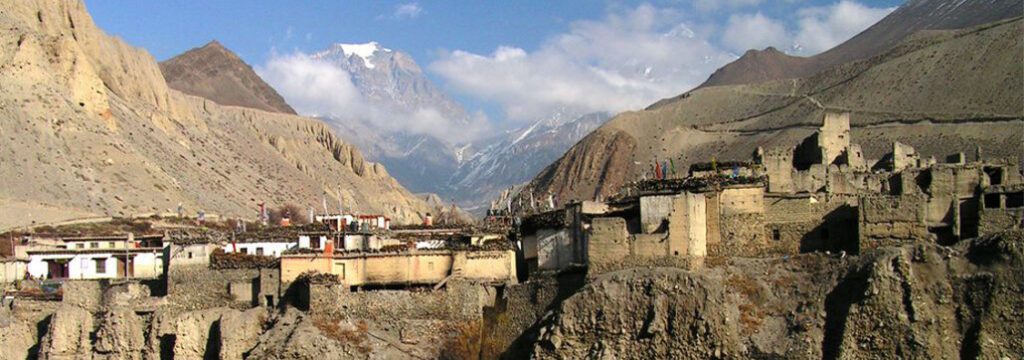
February experiences slightly milder conditions, with temperatures reaching up to 8°C (46°F). Winter in Kagbeni offers a unique experience for those seeking a peaceful retreat and a chance to witness the snow-capped Himalayan peaks.
Accommodation
Let’s discover the accommodation wonders of Kagbeni where tradition meets comfort.
1. Traditional Guesthouses: Timeless Elegance
One of the most authentic ways to experience Kagbeni’s hospitality is by staying in a traditional guesthouse. These charming establishments, typically made of stone and wood, reflect the architectural style of the region.

With cozy rooms adorned with intricate woodwork and traditional decor, they offer a unique glimpse into the local way of life. As you wake up to breathtaking mountain views, the warmth and genuine hospitality of the local hosts will leave an indelible impression.
2. Homestays: Immersion into Local Culture
For travelers seeking a more immersive experience, Kagbeni offers homestay accommodations. Living with a local family allows you to truly immerse yourself in the everyday life and traditions of the village.

From sharing home-cooked meals to participating in traditional ceremonies, you’ll develop a deep connection with the local community. Homestays also provide a wonderful opportunity to learn about ancient customs and folklore passed down through generations.
3. Eco-Lodges: Harmony with Nature
As sustainability gains importance in the world of travel, Kagbeni has embraced eco-lodges that blend seamlessly with the breathtaking natural surroundings. These environmentally conscious accommodations offer a range of modern amenities while minimizing their ecological footprint.
You may also like: Buddhists Holiest Festival: Mani Rimdu Festival
Imagine waking up to panoramic views of the Annapurna and Nilgiri mountain ranges, knowing that your stay supports responsible tourism practices.
4. Tea Houses: A Welcoming Haven for Trekkers
For adventure enthusiasts embarking on the popular Annapurna Circuit Trek, Kagbeni serves as a significant resting point. Along the trekking route, tea houses provide weary trekkers with a warm bed, hot meals, and a chance to recharge before continuing their journey.

These tea houses offer a unique sense of camaraderie as travelers from different corners of the globe come together to share stories, laughter, and a sense of accomplishment.
Rivers
Let’s explore the enigmatic beauty of Kagbeni Rivers, unearthing the tales that surround them and the significance they hold for the local community.
1. The Sacred Kali Gandaki River
The Kali Gandaki River flows through the heart of Kagbeni, cutting a deep gorge between the towering peaks of the Annapurna and Dhaulagiri mountain ranges. This river holds immense religious and cultural significance for the local people.

People believe that the waters of the Kali Gandaki River have purifying properties, and pilgrims from all over Nepal visit Kagbeni to cleanse their souls by taking a dip in its sacred waters.
2. The Jhong River
While the Kali Gandaki River steals the limelight, the lesser-known Jhong River is no less intriguing. Originating from the Jhong Cave, a sacred site revered by both Buddhists and Hindus, this river follows a hidden course through the village, adding to the ethereal charm of Kagbeni.
The Jhong River is steeped in myth, its waters concealing treasures and magical encounters, stories cherished by generations.
Best time to visit Kagbeni
The best time to visit Kagbeni largely depends on your preferences and the activities you plan to engage in. However, generally, the following periods are considered ideal:
1. Spring (March to May)
Spring is one of the best times to visit Kagbeni as the weather is mild and the surrounding landscapes come alive with blooming flowers and lush greenery. The temperatures are pleasant, ranging from around 10°C to 20°C (50°F to 68°F). However, keep in mind that the region can get crowded during this time, especially in April and May.
2. Autumn (September to November)
Autumn is another excellent season for visiting Kagbeni. The weather remains clear and dry, offering stunning views of the mountains.
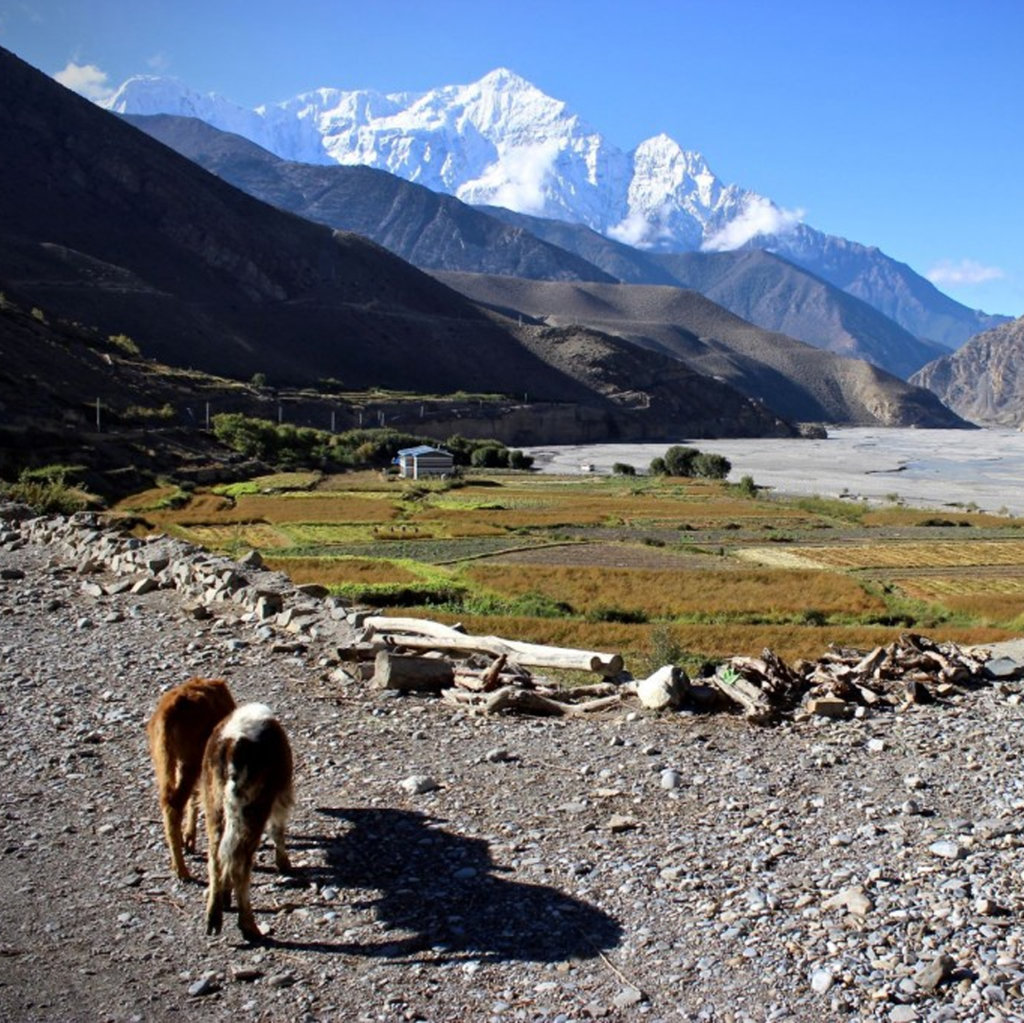
The temperatures are comfortable with daytime temperatures ranging from 15°C to 20°C (59°F to 68°F). The skies are usually clear which makes it ideal for trekking and enjoying outdoor activities.
Jomsom to Kagbeni by Jeep
The journey from Jomsom to Kagbeni in Nepal is a popular route known for its stunning landscapes and cultural heritage. Traveling by jeep is a convenient option for this adventure. Starting in Jomsom, the route follows the Kali Gandaki River through rugged terrain, offering breathtaking views of peaks like Nilgiri and Dhaulagiri. The road is unpaved and can be bumpy, but jeeps are well-equipped.
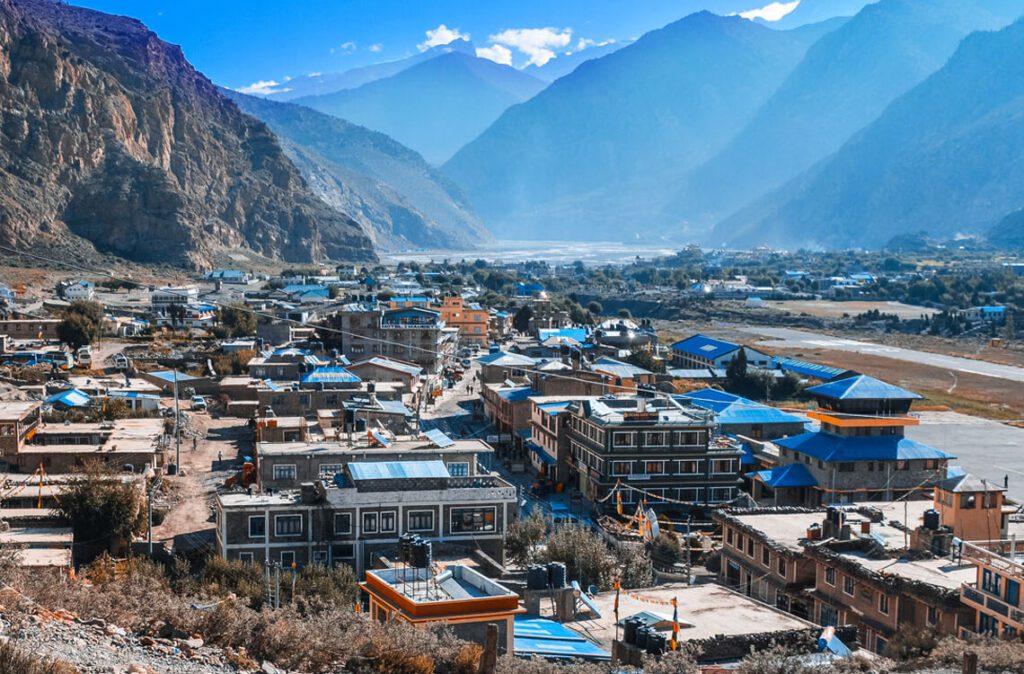
Along the way, you’ll encounter charming villages, monasteries, and prayer flags. Kagbeni, the final destination, is a picturesque village with ancient buildings and a red-walled monastery. From there, you can explore Upper Mustang with an additional permit. Traveling by jeep allows for a convenient and memorable experience in the Mustang region.
Pokhara to Kagbeni by Bus
The bus journey from Pokhara to Kagbeni covers a distance of approximately 163.8 kilometers through the scenic landscapes of Nepal. The route showcases lush valleys, terraced fields, and rural settlements. After passing through Jomsom, the road becomes challenging and rugged, but the buses are designed for such conditions.

The journey offers stunning views of the Annapurna and Dhaulagiri ranges and follows the Kali Gandaki River valley. After several hours, you arrive in Kagbeni, a picturesque village known for its ancient architecture and rich cultural heritage. Traveling by bus allows for a convenient and memorable experience, immersing you in the natural beauty and cultural treasures of the Mustang region.
Kagbeni to Lo manthang
The journey from Kagbeni to Lo Manthang takes you through the captivating region of the Upper Mustang in Nepal. This remote and culturally rich area offers a unique blend of adventure and cultural immersion. Starting in Kagbeni, an ancient trading post, you’ll traverse through the arid and mesmerizing landscape, passing by traditional Mustang villages.

The highlight is the walled city of Lo Manthang, with its majestic palace and ancient monasteries. The journey provides a glimpse into the preserved Mustang culture and offers breathtaking views of the Himalayas. It’s a restricted area, requiring a special permit to ensure its preservation. Overall, this journey is a remarkable experience of history, spirituality, and natural beauty.
More: Tengboche Monastery: The oldest monastery in Khumbu
Kagbeni to Marpha
The trek from Kagbeni to Marpha in Lower Mustang, Nepal, is a moderate journey covering approximately 15 kilometers. It takes around 6-7 hours to reach Marpha from Kagbeni. The Kagbeni to Marpha trek in Lower Mustang, Nepal, presents a scenic route through charming villages, apple groves, and mountains.

Starting in Kagbeni, the trail follows the Kali Gandaki River, passing through charming villages like Tukuche and Larjung. Marpha, known for its apple products and hospitality, serves as a delightful destination with its whitewashed houses and monasteries. This trek provides an opportunity to experience the natural beauty and cultural richness of the region.
Kagbeni to Ghami
The Kagbeni to Ghami trek is a lesser-known adventure in Nepal’s Annapurna region, covering a distance of approximately 26.5 kilometers. Beginning in Kagbeni, this trek traverses remote villages, captivating desert landscapes, and ancient monasteries, offering a unique and natural experience. The trail follows the Kali Gandaki River, passing through traditional Mustang villages like Tangbe, Chhusang, and Samar.

The final destination is Ghami, where you can explore the Ghami Monastery and immerse yourself in the local culture. This moderate trek offers a unique experience, showcasing the distinct heritage of the Mustang region. Permits are required to enter the restricted Upper Mustang area, so planning in advance is necessary. The trek is best undertaken during spring and autumn for favorable weather conditions.
Kagbeni to Upper Mustang
The journey from Kagbeni to Upper Mustang takes you through a captivating region of the Himalayas in Nepal. Starting in Kagbeni, a picturesque village, you trek north along the Kali Gandaki River, witnessing the transition from lush greenery to a barren landscape. Passing through ancient villages like Chele and Ghami, you encounter the unique culture and hospitality of the Mustang people.
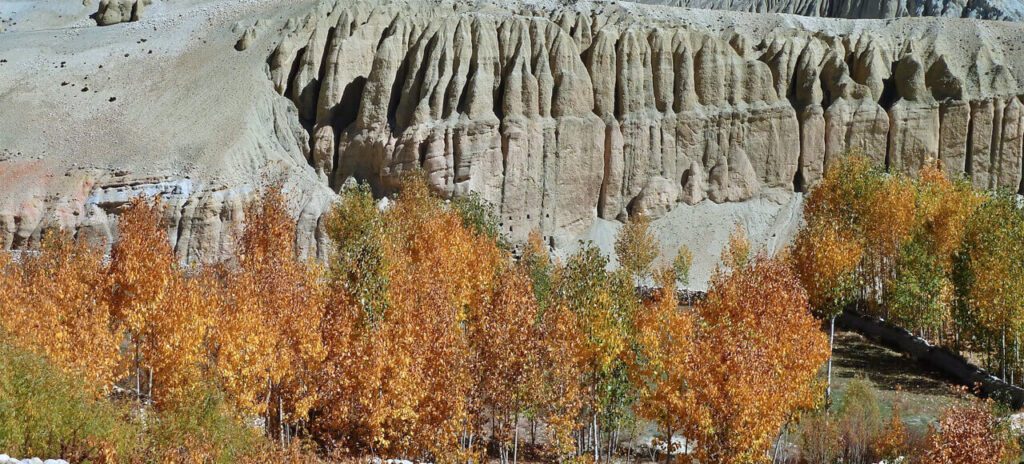
As you venture deeper, you explore ancient monasteries, visit the walled city of Lo Manthang with its historical significance, and discover remote villages like Yara and Ghara. This expedition offers an immersive experience of the captivating landscapes, rich culture, and spiritual heritage of the Upper Mustang.
Kagbeni offers a unique blend of ancient traditions and stunning natural beauty, making it a must-visit destination in Nepal. Extend your adventure with the Upper Mustang Trek, exploring breathtaking landscapes and ancient trails. Asian Heritage Treks’ well-crafted itinerary includes an in-depth exploration of Kagbeni







